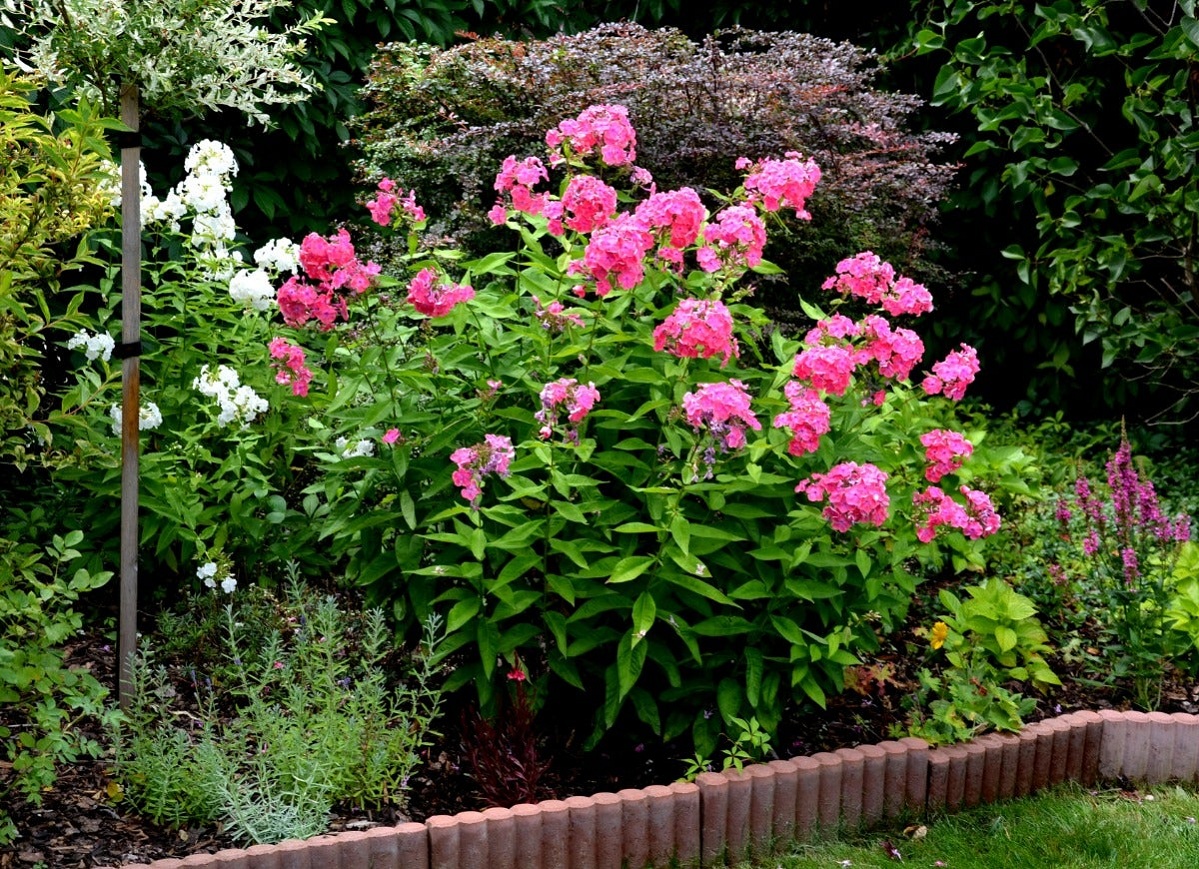For those looking to enhance the beauty of their garden and increase its curb appeal, selecting the right plants can make all the difference. By choosing “high profile” species, you can create a garden that stands out from the rest and catches the eye of any passersby.
These plants not only provide an instant boost of aesthetic appeal, but they also offer unique features such as vibrant colors, impressive height, or eye-catching foliage that can transform your garden into a true work of art.
So why settle for a bland and uninspired garden when you can create a stunning landscape that showcases the very best of nature’s beauty?
Tall and Handsome
Tall plants possess an undeniable allure, reminiscent of the lanky heroes or statuesque heroines of Hollywood. Their commanding presence can make them stand out and even steal the sunlight from others in their vicinity. To avoid overshadowing other flowers, it’s best to plant them at the back of a garden bed or as standalone features.
Tall plants are also excellent for concealing unattractive elements of your landscape, such as chain-link fences or cluttered neighboring yards, just like they once camouflaged outhouses. This slideshow features an assortment of annuals, biennials, and perennials that grow to be 6 feet or taller, some of which are not only ornamental but also edible.
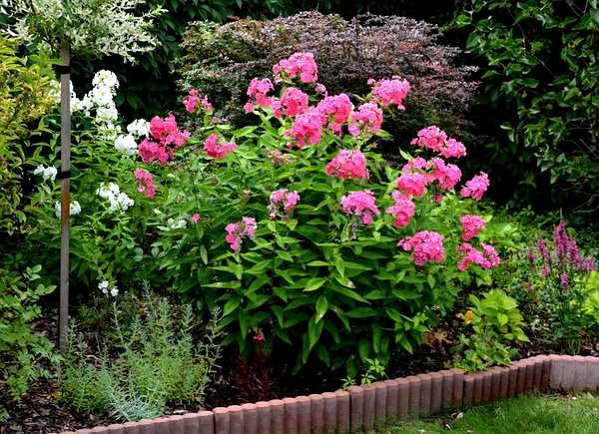
Canna (Canna x generalis)
Canna hybrids are known for their tropical appearance and their vividly colored flowers, as well as their striped or variegated leaves. These plants can grow from 3 to 8 feet tall, except for dwarf varieties, and they thrive in rich, well-watered soil and full sun. While they are hardy in USDA zones 7 and higher, they require mulching in zone 7. For zones 1 through 6, it is necessary to dig up the canna rhizomes in the fall, overwinter them indoors, and replant them in late spring.

Cardoon (Cynara cardunculus)
Cardoons, often compared to globe artichokes, may seem like the less popular sibling, but they have unique features of their own. With rosettes of spiny gray-green leaves and 3-inch purple blooms, cardoons can grow taller than artichokes, reaching up to 8 feet. Although it’s the stalks, not the flower buds, that are edible, they must be blanched prior to consumption. Cardoons thrive in full sun and nutrient-rich soil, and are a perennial option for those residing in USDA zones 7 through 10.

Castor Oil Plant (Ricinus communis)
With ample sunlight and fertile soil, the castor oil plant can rapidly grow up to 15 feet tall in just one summer and develop large, lobed leaves that can measure up to 3 feet across. While this plant produces cultivars with striking maroon or purple foliage and prickly seed pods that turn scarlet, it is hardy only in USDA zones 9 through 11 and is typically grown as an annual. Care should be taken with castor beans, as they are highly toxic, and any red seed pods should be removed early if there are children or pets around.

Cutleaf Coneflower (Rudbeckia laciniata)
Lacinata cultivars of rudbeckias, such as the perennial double-flowered Hortensia or Golden Glow, can attain towering heights of up to 10 feet. While rudbeckias are generally not known for their exceptional height, these cultivars are a notable exception. Cutleaf coneflowers, along with hollyhocks, were once frequently chosen to beautify outhouses in USDA zones 3 through 10. These plants bloom in mid- to late-summer and thrive in average soil and water with full sun or partial shade.

Delphinium (Delphinium elatum strains)
Delphiniums are a rare find in the plant kingdom due to their ability to produce genuine blue-colored flowers rather than purple ones. These tall, spire-like plants are adorned with furry “bee” centers, and although they come in shades of white, pink, and purple, their blue blooms are what make them so unique. Delphiniums thrive in cool-summer climates when planted in rich soil and can reach heights of up to 8 feet. They are adaptable to both full sun and partial shade, making them a versatile addition to any garden. However, gardeners with children or pets should be aware that delphiniums are toxic and may want to opt for safer alternatives.
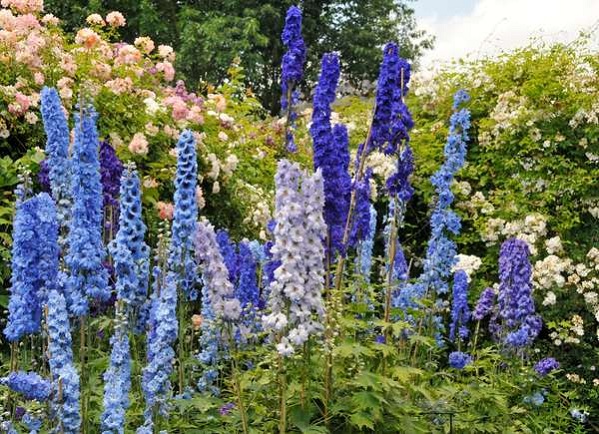
Foxglove (Digitalis purpurea)
These biennial foxgloves are a stunning addition to any well-drained shade garden with their stalks of beauty-spotted flowers, which have a unique cupped shape. Growing up to 6 feet, they bring a touch of elegance to the garden bed. Foxgloves are hardy in USDA zones 5 through 10, but excessive heat should be avoided. While foxgloves contain the chemical digoxin, which is used in heart medication, the plant is highly toxic and should be planted with caution around children and pets.

Hibiscus (Hibiscus moscheutos)
Perennial hibiscuses are not shy plants, with flowers as big as dinner plates and the potential to reach up to 8 feet in height. If you’re looking for a statement plant that demands attention, hibiscuses fit the bill, provided they receive full sun and slightly acidic soil. These plants are typically slow to emerge from hibernation in the colder end of USDA zones 5 through 9, where they are perennial. In cooler climates, they usually bloom in late summer, while they can bloom all summer long in warmer regions.

Hollyhock (Alcea rosea)
Despite their name, hollyhocks are not related to holly plants, and their popularity has waned since their use as ornamental screens for outhouses. However, these biennial flowers, closely related to hibiscus plants, can still add charm to a garden. They can grow up to 9 feet tall in USDA zones 4 through 10, forming towering spires of 3 to 6-inch single or double flowers. Hollyhocks thrive in full sun, protected from wind, and prefer heavier soil to keep their tall stems upright.
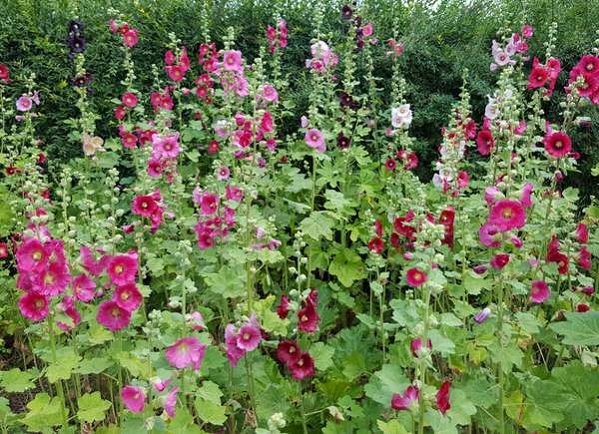
Red Hot Poker (Kniphofia spp.)
The red hot pokers plant features cylindrical spikes of tubular flowers that seem to have been inserted into smoldering embers, with tips often glowing red and the lower parts white-hot. These spikes emerge from grassy foliage, and some species can reach up to 6 feet in height. While uvaria can survive in USDA zone 5, most red hot pokers are only perennial in zones 7 through 10, and they thrive in full sun and well-drained soil.
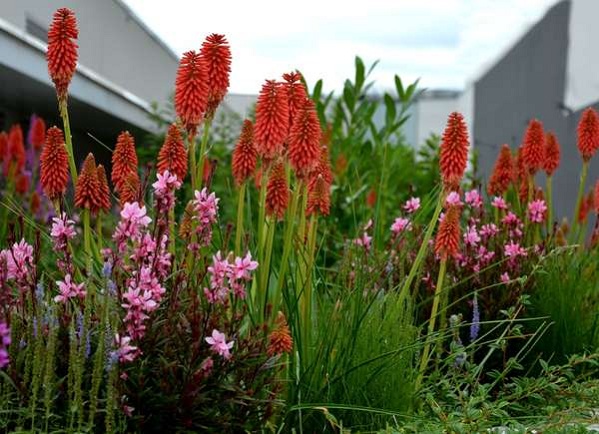
Sunflower (Helianthus annuus)
Annual sunflowers are known for their large and vibrant yellow blooms, which seem to reflect the beaming face of the sun. Like castor bean plants, the tallest cultivars of sunflowers can grow up to 15 feet in a single summer, with flowerheads reaching up to 1 foot in diameter. These plants thrive in full sun, sheltered from wind, and with regular watering. Often planted at the back of vegetable gardens, the plants produce nutritious, oil-rich seeds that make a healthy snack for both humans and wild birds.


